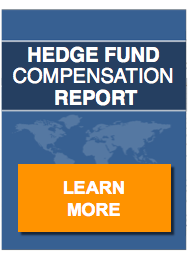The number of start-up hedge funds in the US has steadily increased as investors are willing to put their money into such funds. However, only a few of these funds make it beyond their first year of operations.
As the industry matures and these new start-up hedge funds learn from previous experiences, the number of viable funds is also on the rise.
According to Phillip Chapple, executive director at KB Associates, investors can be lured to invest in a fund through reduced fees.
The Need for Hedge Fund Services
As the demand for start-up funds is constantly increasing, there has also been a growth in hedge fund consultancy services that provide assistance to these fund managers. As a result, the managers are beginning to understand their target market and more early funds are becoming viable. To become viable, a fund must offer investors a unique selling point.
These firms face high start-up costs, in the form of legal fees, compliance and registration with the relevant capital authorities. The industry’s current demand and supply of funds also does not justify launches of many new funds. But financial institutions are beginning to focus their attention towards smaller fund managers.
Lower the Fees
Capital is attracted to the start-up hedge fund through discounted management fees. Start-up hedge funds need to closely study the market trends and the habits of investors before entering the market. Based on the market conditions, it is preferable to adopt macro hedge funds, while European credit funds may also gain popularity as the financial crisis in the zone deepens.
Today, some of the start-up hedge funds are being set up with as little as $5 million. Before the financial crisis, an average start-up hedge fund was set up with an estimated $50 million. Even though there is a lack of early stage investors, seeders open up such funds with the intention of putting capital to work.
Raising Funds and Critical Mass
Start-up hedge funds may have to face a difficult asset raising environment as they are being launched in the market with fewer assets. Another problem is how smaller managers should handle investor requirements to have multiple prime brokers. Start-up hedge funds should not choose to have more than one prime broker till the size of fund grows to $75 million to $100 million.
At the same time, investors perceive larger funds to be more secure. In addition, smaller size of the fund restricts the amount of capital an institutional investor can commit to the fund. As the investor interest is limited, these start-up hedge funds are benefited by seeders and family offices. Start-up hedge funds may also face difficulty in complying with the new Form PF requirements brought into effect by Dodd-Frank law.
Isometric Investment Advisors Ltd, an Asia-focused hedge fund, was forced to wind up after its largest start up investor withdrew cash from it. Some key early-stage investors typically include funds of funds. As the sector faces immense challenges in raising capital from key investors, start-up hedge funds have been unable to move up the ladder and achieve a critical mass.
Without this critical mass, these start-up hedge funds may not achieve momentum and attract capital to grow.


